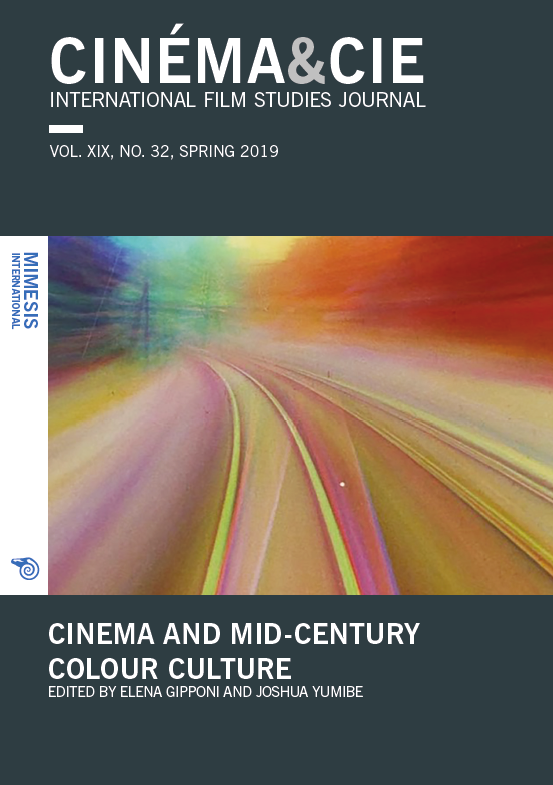Hallucinating Colours: Psychedelic Film, Technology, Aesthetics and Affect
Abstract
Within the context of the ERC Advanced Grant Filmcolors I investigate subjectivity, affect and aesthetics from an historical perspective, drawing on ideas developed within the field of the history of emotions. However, while most of this research is of a synchronic nature, my work contains a strong diachronic component, based on Fernand Braudel’s concept of the ‘pluralité des durées’ (La Méditerranée, 1966). Following Braudel, I distinguish three layers: 1. the layer of slowly changing affects and connected ‘topoi’; 2. the foundational layer of culture and discourse; and 3. the film under investigation. In this essay, I lay out my theoretical and methodological reflections by focusing on colour patterns used in films that represent hallucinations. I will lay out several examples of hallucinatory scenes (level 1) and explain their common (biological) grounds. Further, I will zoom in on 1960s psychedelic culture characterized by hallucinating drug use as entertainment and as therapeutic tool (level 2). The film of interest (level 3) is The Trip (Roger Corman, 1967), which precisely represents this culture. A combination of the analyses of the three levels brings interesting new perspectives on the 1960s, its psychedelic film culture, and how this relates to the topos of colourful hallucinations.






